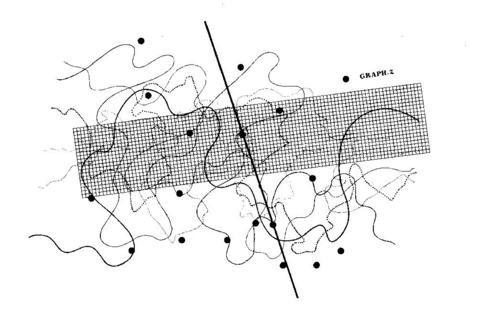
Fontana Mix e Aria sono due composizioni di Cage del 1958-59 registrate qui in esecuzione simultanea e sovrapposta.
Fontana Mix è in realtà un sistema compositivo utilizzato per la prima volta nella stesura del Concerto per Piano e Orchestra (1957-58). Consiste di 10 fogli e 12 trasparenti. I fogli contengono ciascuno 6 linee curve. Dei 12 trasparenti, 10 contengono punti dispersi casualmente (7, 12, 13, 17, 18, 19, 22, 26, 29 e 30 punti), uno ha una griglia e uno ha solo una linea retta.
Piazzando i trasparenti con punti sui fogli con le curve e interpretando il tutto con l’aiuto della linea retta e della griglia, si possono ottenere indicazioni compositive.
Con questo metodo, nel 1958-59, Cage ha realizzato, presso lo studio di fonologia della RAI di Milano con l’assistenza di Marino Zuccheri, i due nastri che tradizionalmente compongono Fontana Mix.
Con lo stesso metodo, ha anche composto Water Walk Sounds of Venice, Aria, Theatre Piece e WBAI. Quest’ultimo altro non è che una serie di indicazioni liberamente combinabili per la regia del suono in brani che coinvolgono registratori, controlli di volume/tono e altoparlanti ed è spesso usato nella realizzazione di Fontana Mix.
Aria (1958) è una partitura di 20 fogli ognuno dei quali dura un massimo di 30 secondi. Il testo impiega vocali, consonanti e parole in varie lingue. La notazione consiste di linee ondulate in vari colori e 16 quadrati che rappresentano rumori vocali. I color denotano differenti stili di canto, determinati dall’esecutore.
